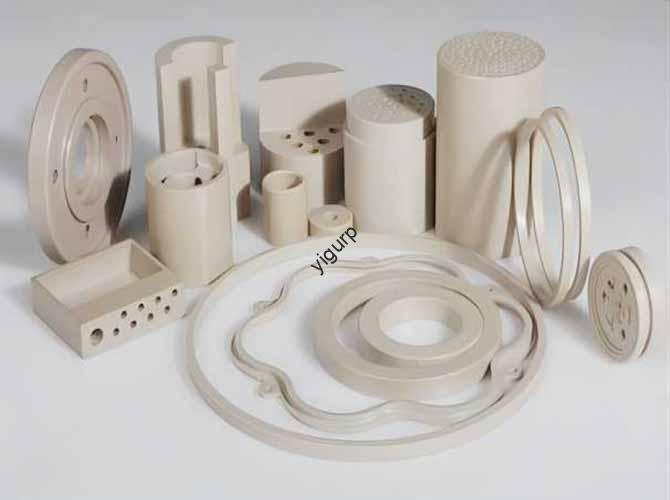Ever found yourself stuck in product development—waiting weeks for a prototype, overspending on materials, or struggling to test complex designs? 3D printing solid prototypes are the solution. These physical, fully formed models transform how teams validate designs, reducir los costos, y acelerar el tiempo hasta el mercado. Abajo, we break down their core benefits, Usos del mundo real, step-by-step production, and how to avoid common pitfalls.
1. Beneficios centrales: Why 3D Printing Solid Prototypes Beat Traditional Methods
Que hace 3D printing solid prototypes a game-changer? The table below compares them to traditional prototyping (Mecanizado CNC, manual making) to highlight clear advantages:
| Categoría de beneficio | 3D Impresión de prototipos sólidos | Prototipos tradicionales (CNC/Manual) |
| Velocidad de producción | 1–3 days for complex designs (P.EJ., piezas automotrices) | 2–4 weeks for the same complexity |
| Eficiencia de rentabilidad | 50–70% lower material waste; no tooling fees | 20–30% material waste; expensive tooling ($500+) |
| Flexibilidad de diseño | Maneja las cavidades internas, Detalles finos (0.1precisión mm) | Lucha con formas intrincadas; Limitado por herramientas |
| Repetibilidad | Resultados consistentes (± 0.05 mm de tolerancia) entre lotes | Variabilidad por trabajo manual o desgaste de herramientas. |
| Idoneidad para lotes pequeños | Ideal para 1–100 unidades; sin aumentos en los costos de instalación | Costoso para tiradas pequeñas (las tarifas de herramientas no aumentan) |
2. Aplicaciones clave: Solving Problems Across Industries
3D printing solid prototypes no son sólo para “probar”: resuelven desafíos únicos en tres sectores críticos:
A. Diseño industrial (Automotive/Aerospace)
Los ingenieros deben validar el ajuste y el funcionamiento de las piezas antes de la producción en masa.. Por ejemplo:
- Un equipo automotriz utilizó 3D printing solid prototypes para probar un nuevo diseño de soporte del motor. El CNC tradicional habría tomado 3 semanas y \(2,000 en herramientas: impresión 3D entregada 5 prototipos en 2 días para \)300 total.
- Resultado: Identificaron un punto de estrés temprano, evitando un $50,000 recall later.
B. Electrónica de consumo
Brands prioritize ergonomics and user experience. A smartphone maker:
- Impreso 10 solid prototypes of a new phone case (using SLA technology) to test grip and button placement.
- Used feedback to adjust the case’s curve—reducing user hand fatigue by 30% (per user testing).
do. Educación
Teachers struggle to make complex concepts tangible. A university:
- 3D printed solid prototypes of human bones and gear systems for engineering/biology classes.
- Student comprehension scores improved by 45% (VS. textbook-only learning), as students could touch and disassemble models.
3. Step-by-Step Production Process: How to Make a 3D Printed Solid Prototype
Creando un 3D printed solid prototype is straightforward—follow this linear, actionable workflow:
- 3D Modelado: Utilizar software (Solidworks, Fusión 360) to design a digital model. Concentrarse en:
- Adding clear dimensions (P.EJ., “100mm length, 5mm wall thickness”).
- Marking support structures for overhangs (angles >45° need support).
- Tech & Selección de material: Elige según tus necesidades:
| 3D Printing Tech | Mejor para | Materiales utilizados |
| SLA (Estereolitmicromografía) | Detalles finos (P.EJ., joyas, electrónica) | Resinas (Como abdominio, flexible) |
| MDF (Modelado de deposición fusionada) | Piezas duraderas (P.EJ., corchetes) | Estampado, Petg, nylon |
| SLSS (Sinterización láser selectiva) | Piezas resistentes al calor (P.EJ., componentes del motor) | Poliamida (nylon), glass-filled composites |
- Impresión & Postprocesamiento:
- Upload the model to the printer, set parameters (altura de la capa: 0.1–0.2 mm), y empieza a imprimir.
- Después de imprimir: Eliminar soportes, sand the surface (Para la suavidad), and paint if needed (P.EJ., for visual prototypes).
4. Common Pitfalls & How to Avoid Them
Even great 3D printing solid prototypes can fail—here’s how to fix top issues:
| Pitfall | Causa | Solución |
| Weak part structure | Paredes delgadas (<1milímetros) or lack of support | Increase wall thickness to 1.5–2mm; add support for overhangs >45° |
| Acabado superficial rugoso | High layer height (>0.2milímetros) | Use 0.1mm layer height; sand with 400-grit sandpaper post-print |
| Dimensional inaccuracies | Printer calibration issues | Calibrate the printer’s bed level and filament flow before printing |
5. La perspectiva de la tecnología de Yigu
En la tecnología yigu, vemos 3D printing solid prototypes as the backbone of fast, smart product development. We’ve helped clients cut prototyping time by 60% using our optimized SLA/FDM printers and high-performance materials (P.EJ., heat-resistant resins for industrial parts). We also offer custom workflows—for example, a medical client used our SLS service to print biocompatible prototypes, accelerating their device’s FDA approval by 3 meses. Para nosotros, it’s not just about printing parts—it’s about helping you solve problems faster.
Preguntas frecuentes
- What’s the maximum size of a 3D printed solid prototype?
Most desktop printers handle up to 300x300x300mm. Para piezas más grandes (P.EJ., parachoques automotriz), we use industrial printers (1000x1000x1000mm) or print in sections, luego ensamblar.
- How long do 3D printed solid prototypes last?
Depende del material: PLA prototypes last 6–12 months (good for testing), while nylon/SLS prototypes last 2–3 years (suitable for long-term use).
- Can 3D printed solid prototypes be used for functional testing (P.EJ., pruebas de estrés)?
Yes—choose durable materials like nylon or PETG. Por ejemplo, a nylon prototype can withstand 500+ cycles of bending (simulating real use) sin romper.
